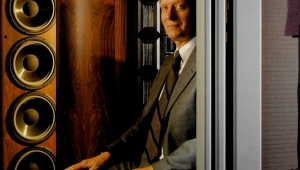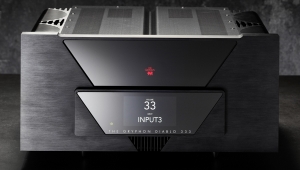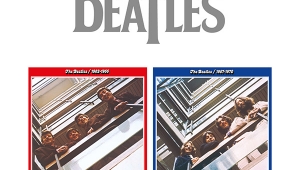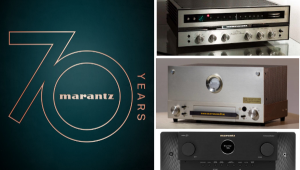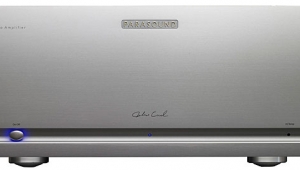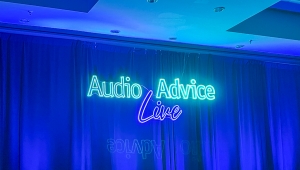| Columns Retired Columns & Blogs |
Next Stop: Munich. AES Folds Its Tent in SF
Day Four at AES. The crowds were somewhat thinner, but the convention floor was still buzzing, still incredibly busy right up to 4pm, the official break-down time. I spent a couple of hours strolling the floor with Vacuum Tube Valley's Eric Barbour, who works another side of the thermionic street as an application engineer for Svetlana, the Portola Valley, CA-based importer of Russian-made tubes. Svetlana will soon be making the ubiquitous 12AX7 and other popular tubes in its St. Petersburg factory, he told me. Instability in Russia has hindered production recently, but Eric said all such problems have been solved. He also mentioned that VTV has moved to new offices and should soon be published quarterly. I stood by as he made a sales call at the Millennia Media booth.
Millennia makes some gorgeous tube equipment for studio use, and spouts the audiophile party line: " . . . only one active stage in the audio signal path . . . fewer amplifier stages mean greater sonic integrity and heightened musical reality . . . imagine the musical clarity achieved as precious audio signals are spared from successively colored amplifier stages . . . it's something you must hear to appreciate." All this is lifted from an information sheet for Millennia's "Twin Topology" NESQ-2 equalizer, a fascinating device that allows users to switch between JFET circuitry or class-A triodes with the push of one switch. Tom Jung calls this ultimate expression of the A/B comparison "the most transparent equalizer I've heard to date."
Computer applications were everywhere. One of the most interesting was EMU Ensonic's E-Card, a PCI card that "lets you control up to 64 'voices' of samples and/or hard-disk tracks with multichannel effects processing and mixing. . . . The E-Card has high-quality audio I/O built right into the card, including S/PDIF and output on RCA connectors, as well as low-noise, balanced line-level analog I/O on 1/4" TRS connectors." EMU makes a suite of products that, with but a few external devices (microphones and musical instruments), could turn a small spare room into a music recording studio.
Audiophiles might benefit from Acoustic-X, a room analysis and optimization software. The Windows-based program---a Mac version is said to be in development---analyzes room boundary, reflection, and interference responses and plots modes to help improve existing listening rooms or to aid in the design of new ones. My brief overview of the literature makes me think the software may be somewhat limited in that it has no way to deal with irregularly shaped rooms, or to let users enter variables for room furnishings or materials of varying absorbency or density. Nonetheless, it appears to offer promise as a guide to speaker placement and listening position. Electronic Musician magazine claims Acoustic-X "helps eliminate the guesswork" involved in room treatment.
Sonic Solutions announced that it would support the rollout of Sony/Philips' Super Audio CD with a new eight-channel Direct Stream Digital workstation. Renowned recording companies Mobile Fidelity and Telarc had previously announced their support of DSD at HI-FI '98. Digital Conversion Systems Ltd. joined growing support for the format with a full array of DSD products at AES. The SACD may be a marketing power play by Sony/Philips, but there's no doubt about its excellent sound quality.
24-bit recording has now come fully into its own in pro audio, with plenty of new gear equipped for extended word length. Tascam's DA-88 and Sony's PCM 3348HR occupy the upper end of the market, but there is plenty of more affordable 24-bit equipment now on the market. But despite the proliferation of digital audio products of all types, analog tape still dominates the recording-and-mixing process. Billboard reports that up to 80% of the music in its top 100 list has had analog tape involved "in a significant way" during the recording process. Many recording engineers routinely use both digital and analog technologies at various stages of their projects.
Audiophiles, we've been validated: In promotional literature for its new line of self-powered compact monitors, NHT Pro raises the blunt if obvious question: "Ever wonder why your stereo sounds better than your studio?" and answers it by noting that ". . . high-end consumer speakers set the standard in midrange fidelity, spatial imaging, and overall transparency." The High End has finally received at least one long-overdue acknowledgment from its contentious cousins.
All in all, this season's AES was counted a success by almost all in attendance. There were a few grumbles here and there, but most folks did fairly brisk business and pronounced the future promising. "This was one great show," said Monster Cable's Director of Sales and Marketing, Tom Menrath, at closing time; "I'm dead-beat tired but very happy." Most of his colleagues would agree.
- Log in or register to post comments
